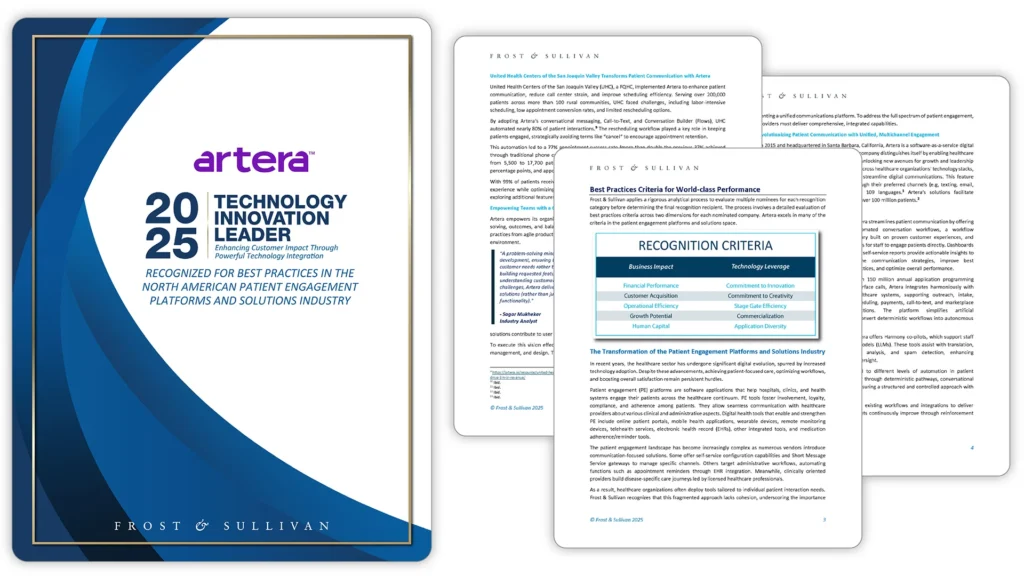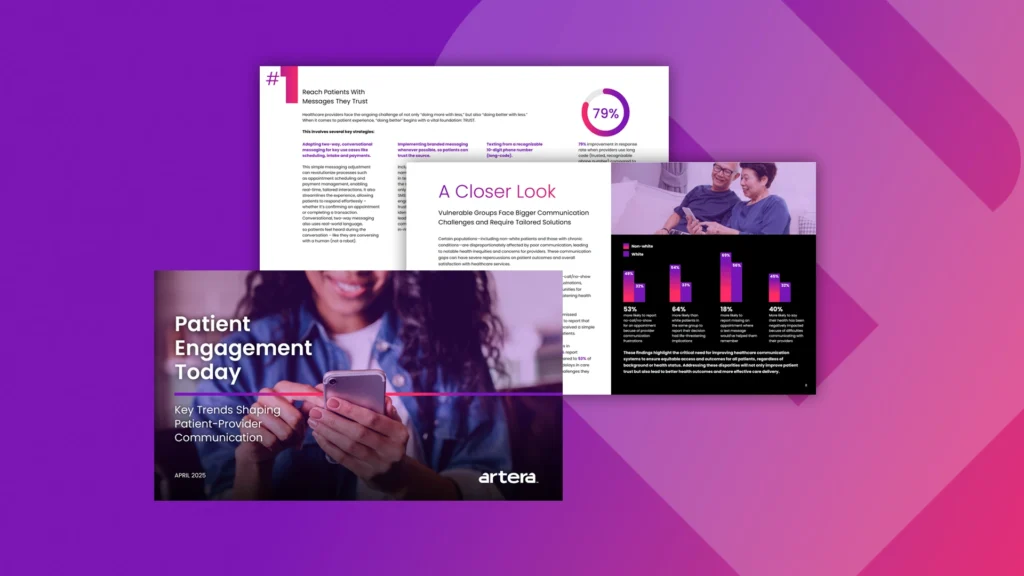Creating a successful patient communications plan is a critical aspect of how healthcare providers engage with their patients. Today’s U.S. healthcare patients are willing to switch providers when their needs and expectations are not met. To better understand what drives effective patient communication, the Artera Data Insights team conducted a messaging analysis which explored the following questions:
- What are the components of effective patient communication?
- Which messages deliver high levels of patient engagement?
- What communication best practices should providers deploy to meet the communications expectations of patients?
In a six-month long study, Artera Data Insights conducted an extensive analysis of over two billion patient outreaches, encompassing more than 800 healthcare provider organizations, to gain insights into the factors influencing patient engagement.
Artera Data Insights Key Findings:
- Messages delivered via long code significantly improve patient response rate (70.5% patient response rate for long code vs. 39.3% response rate for short code).
- Messages delivered in a patient’s native language significantly improve patient response rate by 21% (on average, across our analysis of four different language cohorts).
- The digital divide still exists with approximately 17% of patients using only landlines (unable to receive text messages) for healthcare communication, making the availability of multiple communications (e.g., SMS/text, email and IVR/voice) channels critical for access.



